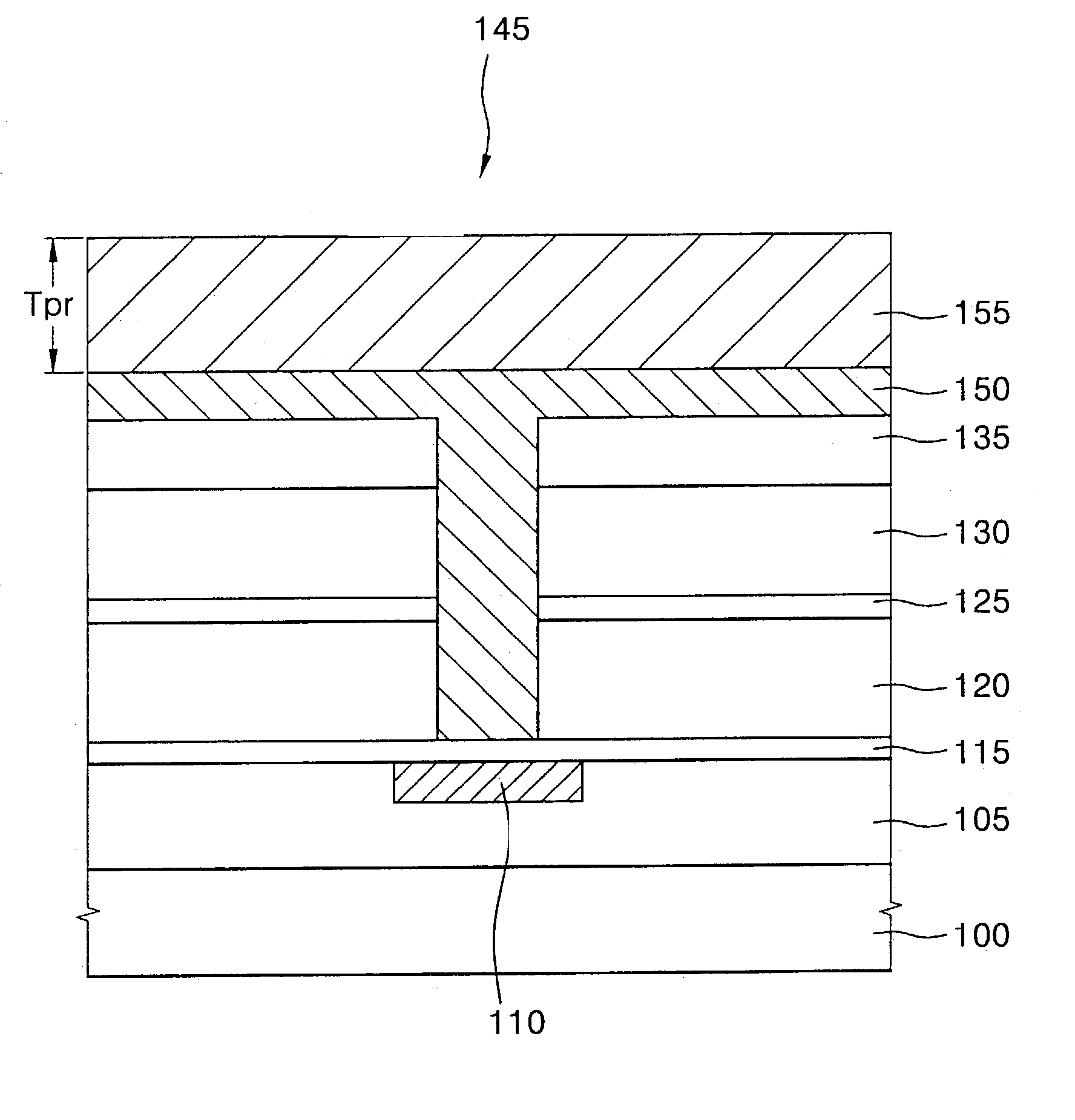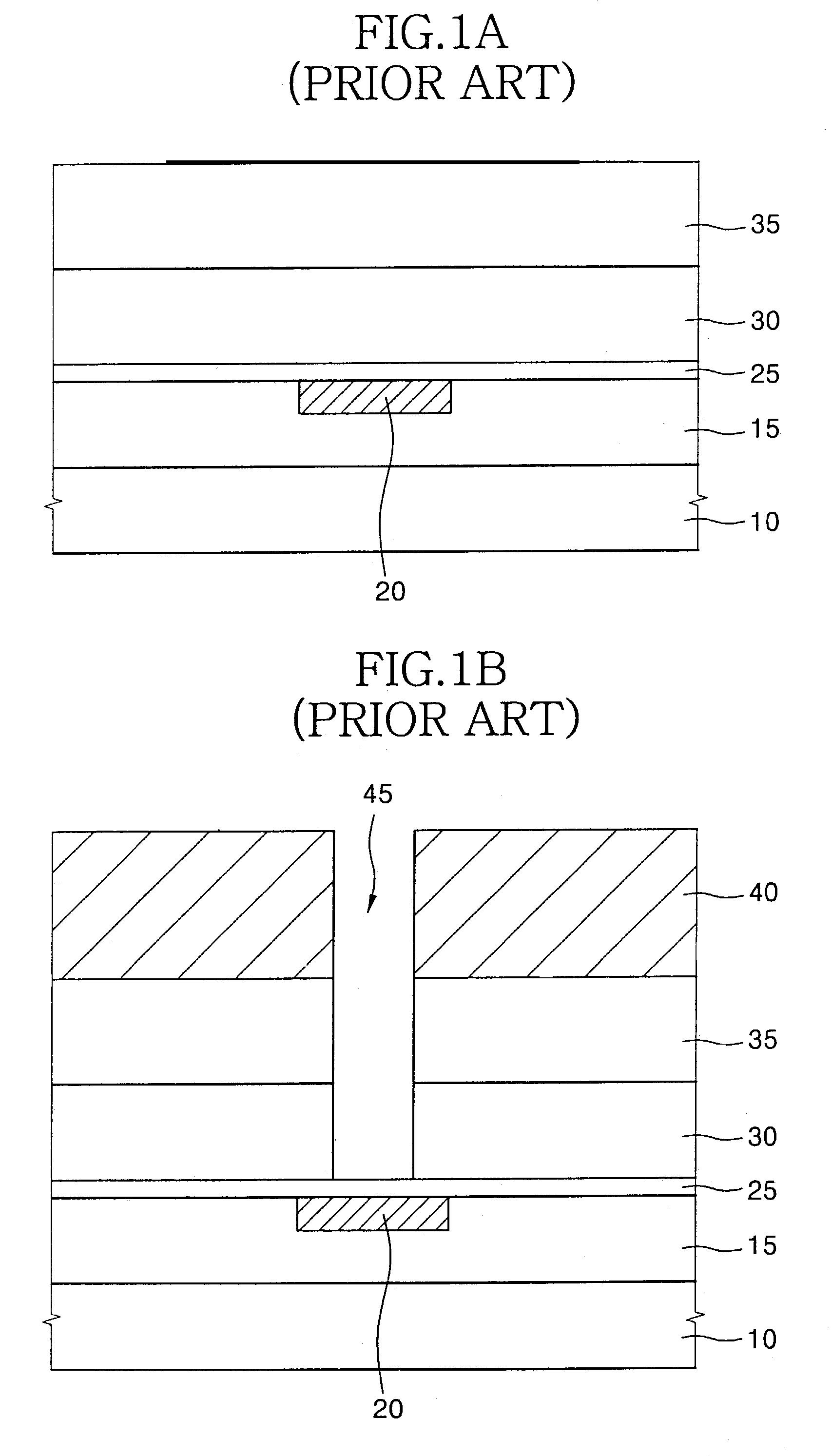Method for manufacturing a semiconductor device
a semiconductor and manufacturing technology, applied in the field of semiconductor devices manufacturing, can solve the problems of insufficient guarantee of the depth of focus (dof) interference between the interconnection lines, and the total delay of the signal in the device, so as to reduce the thickness of the photoresist film and ensure the processing margin of the photolithography process
- Summary
- Abstract
- Description
- Claims
- Application Information
AI Technical Summary
Benefits of technology
Problems solved by technology
Method used
Image
Examples
Embodiment Construction
[0029]Hereinafter, some preferred embodiments of the invention will be described in detail with reference to the accompanying drawings. In the following drawings, like reference numerals identify similar or identical elements.
[0030]FIGS. 2A to 2I are cross-sectional views illustrating a method for manufacturing a semiconductor device using a dual damascene process according to a preferred embodiment of the invention.
[0031]Generally, the dual damascene structure in a semiconductor device includes a via hole to form a contact that makes electrical contact with an underlying conductive material, and a trench for forming a metal wiring therein. The dual damascene structure is usually formed through three kinds of methods as follows.
[0032]In a first method for forming the dual damascene structure, a via hole is formed before the trench is formed. The via hole is formed after the trench is formed in a second method for forming the dual damascene structure. In a third method, the via hole ...
PUM
 Login to View More
Login to View More Abstract
Description
Claims
Application Information
 Login to View More
Login to View More - R&D
- Intellectual Property
- Life Sciences
- Materials
- Tech Scout
- Unparalleled Data Quality
- Higher Quality Content
- 60% Fewer Hallucinations
Browse by: Latest US Patents, China's latest patents, Technical Efficacy Thesaurus, Application Domain, Technology Topic, Popular Technical Reports.
© 2025 PatSnap. All rights reserved.Legal|Privacy policy|Modern Slavery Act Transparency Statement|Sitemap|About US| Contact US: help@patsnap.com



